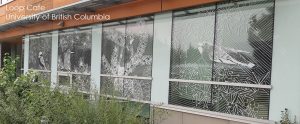Understanding and addressing the bird-building issue requires the input and expertise of biologists, architects, engineers, lawyers, policy makers, and more. The interdisciplinary nature of this issue presents an opportunity to involve and educate students across a wide variety of faculties and departments to prepare them to meet the conservation and sustainability challenges of the future.
There are ample opportunities for experiential learning activities to complement course learning objectives. Students can apply the knowledge and theory they learn through their coursework to tackle real-world challenges. Designing assignments and activities to be realistic and similar to what they might face in the workplace gets students to start thinking like professionals and helps them understand the relevance of the concepts learned in class. These types of activities are a great way to enhance student engagement and learning, as well as equip them with necessary technical and problem-solving skills to be successful in the workplace.

Photo by Lisa Horn




 The sky is the limit for designing attractive, bird-friendly buildings and window treatments. Have students create their own bird-friendly window treatments, making sure they meet FLAP’s standards for
The sky is the limit for designing attractive, bird-friendly buildings and window treatments. Have students create their own bird-friendly window treatments, making sure they meet FLAP’s standards for 



